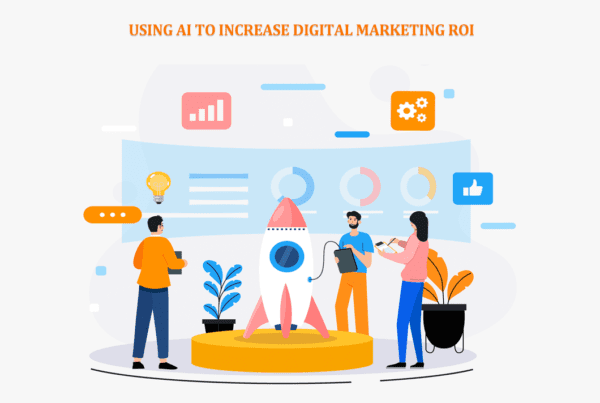Does a small non-profit organizations need a website? The answer, without a doubt, is a resounding yes, and with very good reason. It is fantastic for brand visibility. An online platform exposes the nonprofit to a broad audience base.
All you need is the right targeting and digital marketing strategies to reach the right ears. Some strategies include content generation, SEO, video content, and storytelling.
All these are achievable without spending a lot of money. This is unlike what you would spend in the case of analog advertising.
The teams can update content anytime they need to. It ensures that the nonprofit stakeholders are always in the know.
Our article explores the importance of web development to small non-profit organizations.
Benefits of Web Development to a Non-Profit Organizations
Right now as you look at this website, you would not imagine what went into setting it up. Forget about the aesthetics for a minute. There is the whole process that goes in the background. The aim is to ensure a functional and high-performing site.
Web developers ensure that everything is running seamlessly. It ensures visitors have a pleasant user experience. They use coding languages like HTML, JavaScript, and CSS to bring everything together. That is why it is important to hire experts when developing a nonprofit website.
- You Need It for Digital Marketing
Why is nonprofit digital marketing important? Well, it is a critical strategy for attracting donors. The organization gets a cost-effective way to generate brand visibility.
An online presence establishes credibility for the organization. It also helps create long-term relationships with stakeholders. To achieve all these, you need a website.
Web developers understand the needs of digital marketers. They know the must-have features that will help bring traffic to the website.
Let’s take the example of mobile optimization. Modern online audiences use their smartphones to access the internet. If the organization does not consider this when setting up a website, it will lose a lot of traffic.
Web developers and designers start with a mobile-first approach. Once they get the aspects right for a small screen it becomes easier to scale to larger ones. For digital marketers, it increases the chance of reaching an even broader base.
- The Organization Benefits from Expert Advice
Developing a website for a non-profit is a very specific area. Certain features play a significant role. Such include:-
- Donation buttons for easy collection and management of contributions. The web designers and developers will work together to determine the best positioning. The buttons should be in a prominent place. Once the user clicks on it, it should direct them to the right page to complete the donation.
- Inbuilt donation forms provide a convenient way to get information. The visitor does not need to link to an external form, thus convenience.
- Plugins to increase the functionality of the website. Nonprofits have tons of options on platforms like WordPress. A web developer can recommend the best one for the organization.
- Payment gateways to make it easy to receive contributions.
- API Integrations like CRM or other third-party software.
- Logical navigation to make it easy for online visitors to find whatever they need on the site.
- Best advice on the latest technologies. Such include chatbots to handle queries in an efficient manner
- Volunteer portals and contact information
- Blog posts, social media links, and so much more.
Web developers and designers will customize your site depending on your needs. Before setting up the website, come up with goals. They act as a roadmap for what you hope to achieve. It also makes it easier for the professionals because they will have clarity on what you need.
- Better Communication with Stakeholders
A website is one of the first places people will look for information about the organization. How your site performs will have a significant impact on whether they stay or not.
Imagine a website that is difficult to navigate. The pages are slow loading and generally non-responsive. The links result in 404 errors.
The haphazard placement of elements makes the pages look very unattractive. Imagine for a minute that you were the one on the site as a visitor.
How long will you stay on such a site? What impression would you form of the non-profit organization? How likely are you to give money or time to support their work?
The web development company will ensure a responsive high-performing website. They will, for example, choose the right web host provider. Such should provide enough storage and bandwidth to keep the website up and running.
The teams will also advise on key elements that could impact the performance of the site. Small non-profit organizations must indeed watch their spending as much as possible. But, consider it an investment to let a professional handle the setting up of the website.
- Ongoing Support
Setting up the website is the first step. There is also the whole aspect of maintenance that becomes a routine part of the processes. Professional web developers will offer ongoing support.
That means the experts are available in case anything happens to the site. This is especially important if you do not have an in-house IT team.
Small nonprofit organizations may not have the budget to hire such staff on a full-time basis. It becomes more cost-effective to have the web developers on standby.
Final Thoughts
A small nonprofit organization should consider it an investment to hire web developers. The professionals have relevant experience in the field. They can offer the best advice on how to go about setting up a website.
Those whose specialty is nonprofit website development know the must-have features to include. Their focus is to ensure a responsive and high-performing website. That means ensuring things like fast page loading speeds and easy navigation.
Remember, anyone looking for information will go to your website. What they find will form the perception they have towards the organization.
If the user experience is unpleasant, they will have a negative impression. It is also likely that they will leave and never come back.
Web developers ensure that everything is running well. And most importantly, they continue to offer their support well after the site is up.









